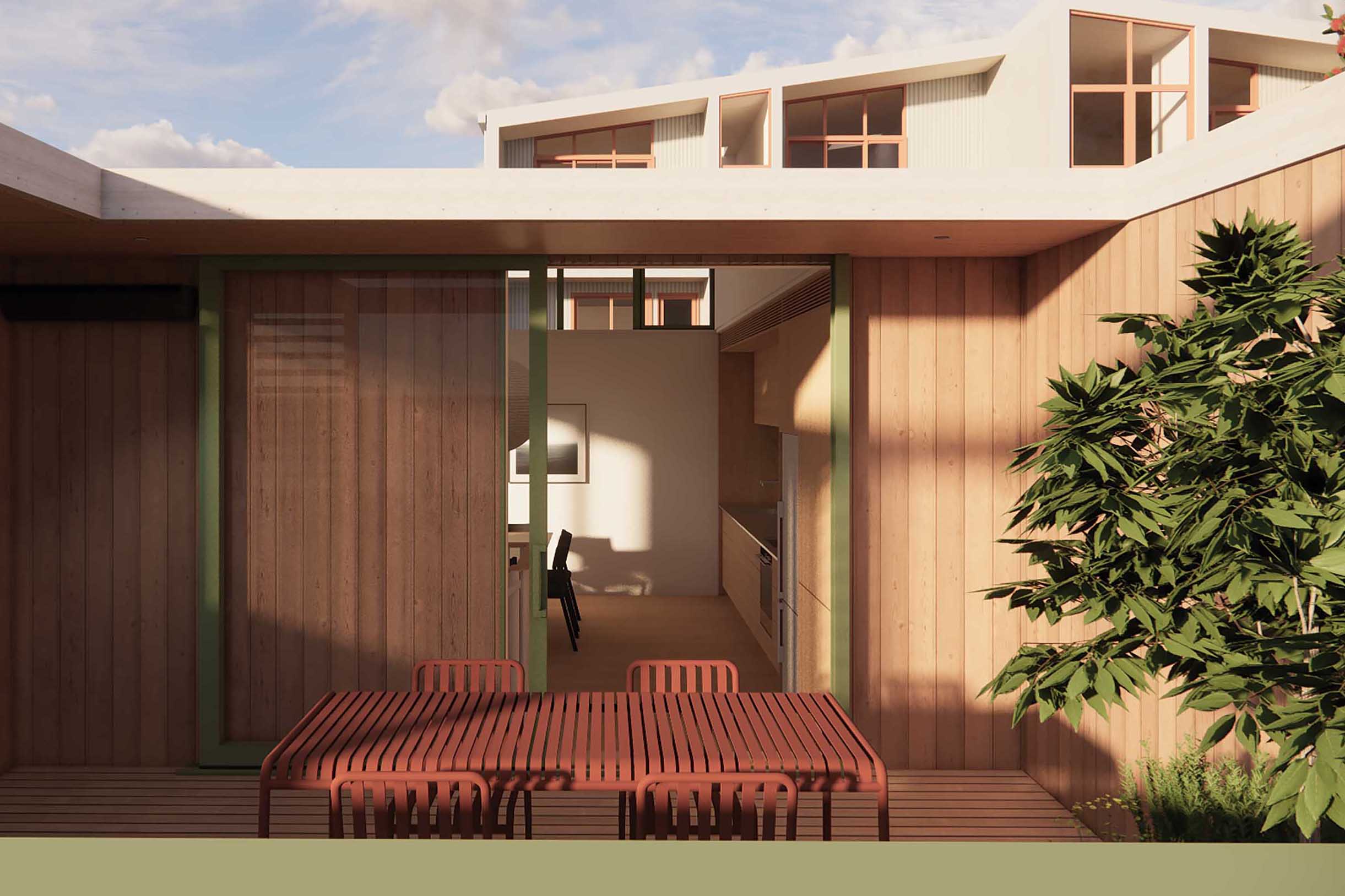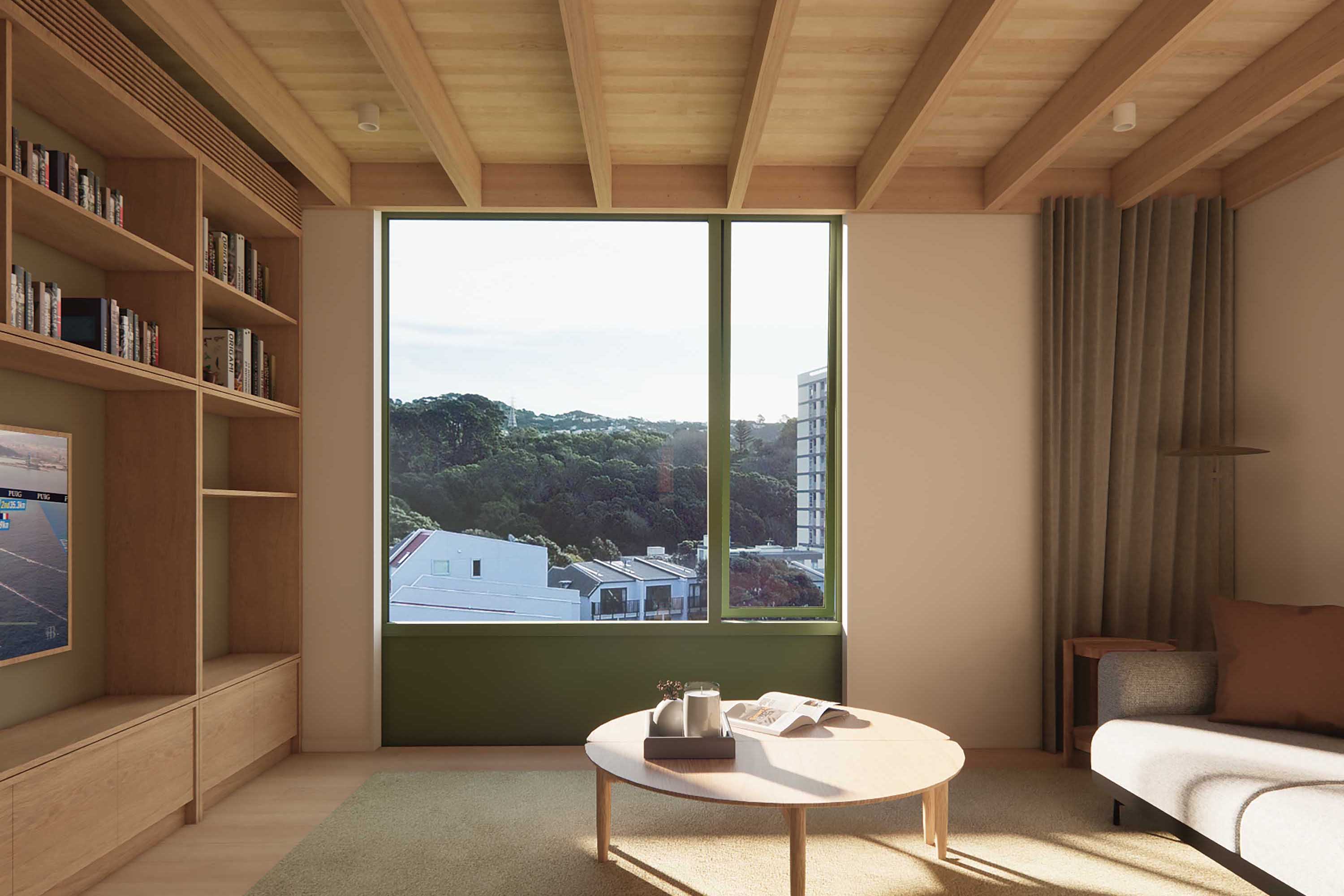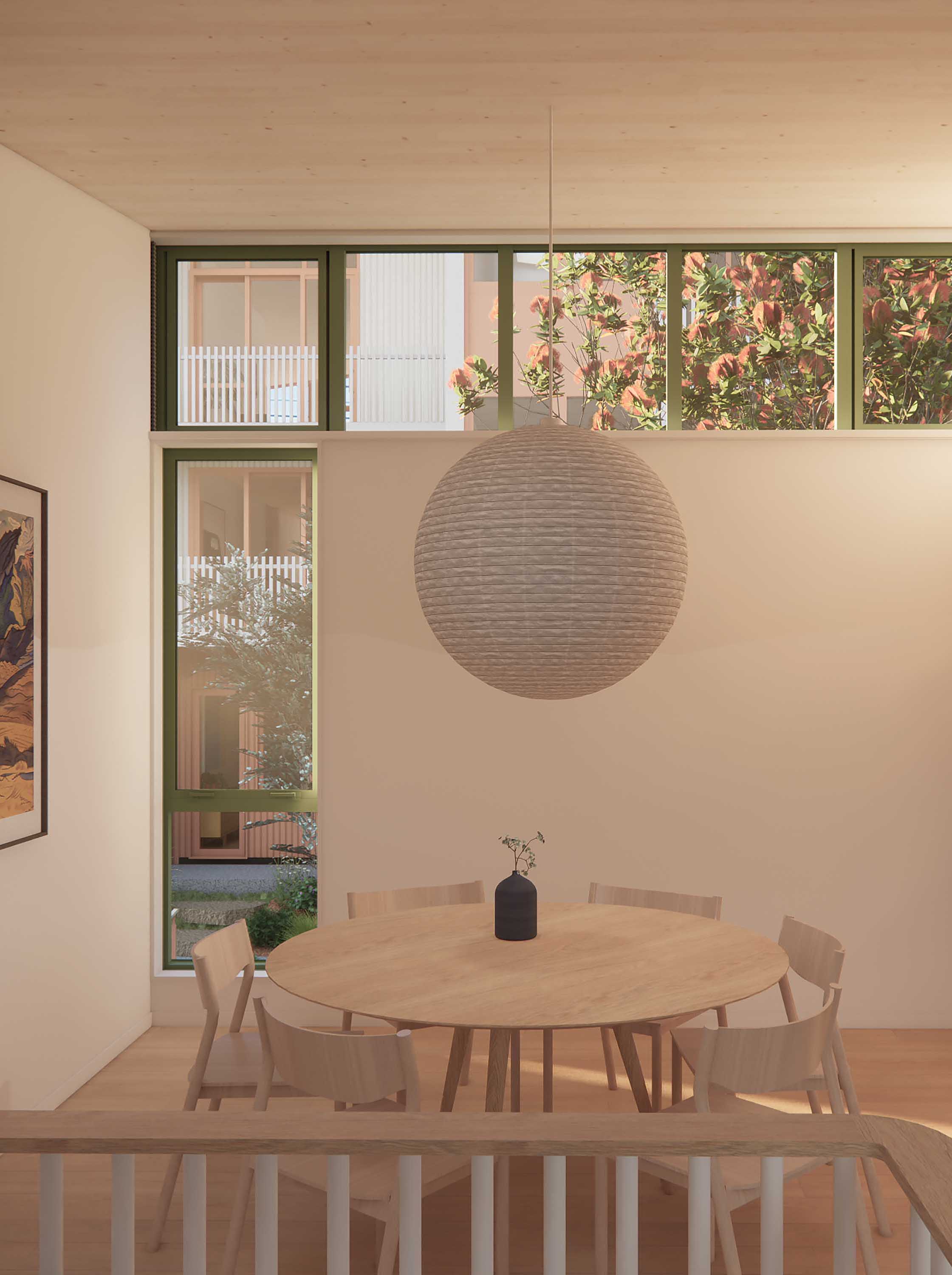

Amid all the many, varied – and badly needed – calls for increased density in Aotearoa is one glaring issue: most of the homes we build in this category are uniformly rubbish. The category is notoriously difficult to create good architecture in – though for different reasons. At the high end, there seems to be an expectation of extreme luxury from both clients and developers, with pricing to rival that of a large house in an exclusive suburb. At the “affordable” end, developer-driven metrics drive everything from interior choices to cladding. In between? Crickets, frankly.
That’s where Makers of Architecture’s Tahi development comes in. Makers is now more than a decade old, and it is comprised of two separately run but collectively owned companies – an architecture practice led by Jae Warrander and Beth Cameron, and a fabrication company led by Grant Douglas and Olly Townend. In the former, Warrander and Cameron have built up a practice that focusses on delivering rational, elegant, low-carbon buildings. In the latter, Douglas and Townend have built a company specialising in prefabrication and offsite construction.
The two have come together with Tahi – a development in Te Aro, on a street overlooking the capital’s downtown. Two sites, which formerly housed a pair of semi-notorious boarding houses, will contain two buildings and seven townhouses, ranging in size from 90 square metres and two bedrooms, to 150 square metres and four bedrooms. “We’re investing in what we believe in,” says Cameron. “We want to provide a new urban housing offering – one that supports the creation of a diverse, healthy, sustainable community and environment.”
The design is arranged in two blocks, Street and Rear, stepping down the slope of the site to maximise sun and outlook. Interiors are generous, while a mix of dwelling types encourages a diverse community. Shared gardens and flexible rooms for work, hobbies and storage provide a considered alternative to the typical garage. True story: Makers managed to convince planners that they didn’t need to incorporate garaging when they realised they’d have to take out five street parks to create four garages.
The Street block is clad in corrugate, with touches of terracotta-coloured cladding that acknowledge Mount Cook’s brick-making heritage, not to mention the use of brick in the bungalows and villas that line the street. Rear, meanwhile, has a green colour palette inspired by the bushy gully below, and Māori gardening traditions in the area. That’s the outside: internally they are generous, with ceiling heights rising from 2.65 metres to 3 metres in the top-floor living spaces, and a material palette that incorporates lots of timber and generous windows.
It’s in the construction where things start to get interesting, however. Makers have leaned on their experience in making houses from mass timber, building the entire development out of CLT timber panels across the walls, floor and roof, with minimal use of structural steel and concrete. This sequesters carbon and provides natural warmth and resilience. It also ensures peace and privacy thanks to the panel thickness, which exceeds code requirements for inter-tenancy walls.
Each house has a mechanical heat exchange ventilation system which delivers fresh air to each room while maintaining consistent temperatures and improving air quality. The houses are arranged around passive solar principles, so they need minimum heating and cooling, while hot-water heat pumps reduce energy consumption, and garden water tanks provide for planting and emergency backup.
“These homes have been created to look after the community, minimising overheads, running costs and maintenance,” says Cameron, “affording everyone more time to invest in what they enjoy doing.”



